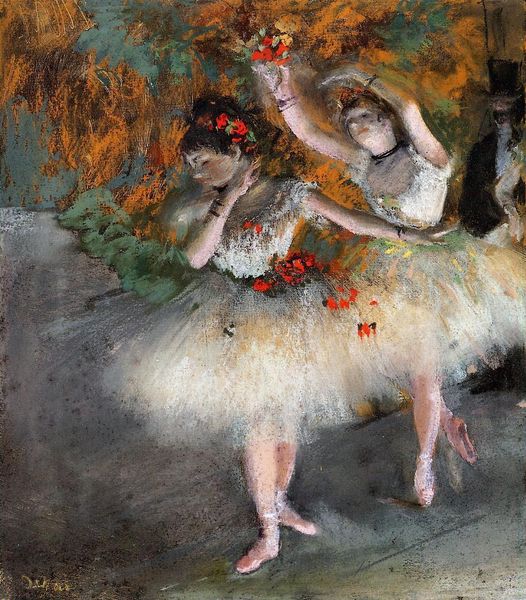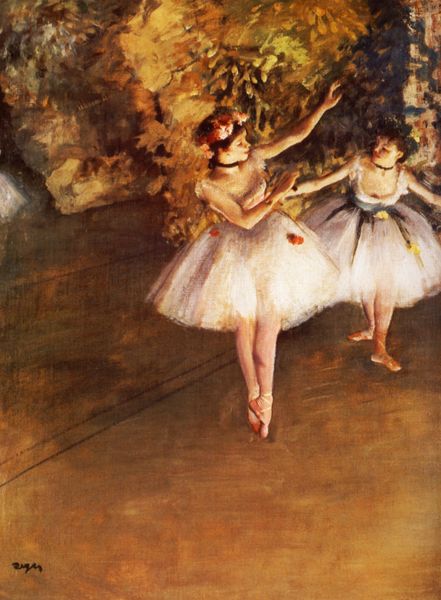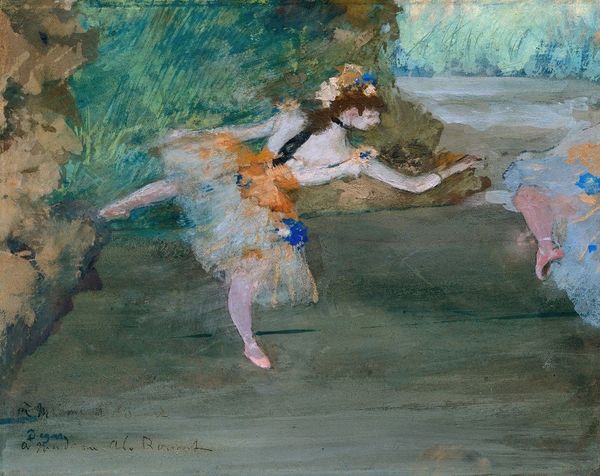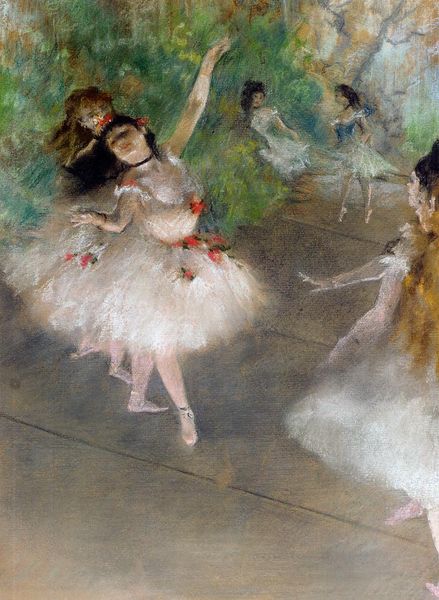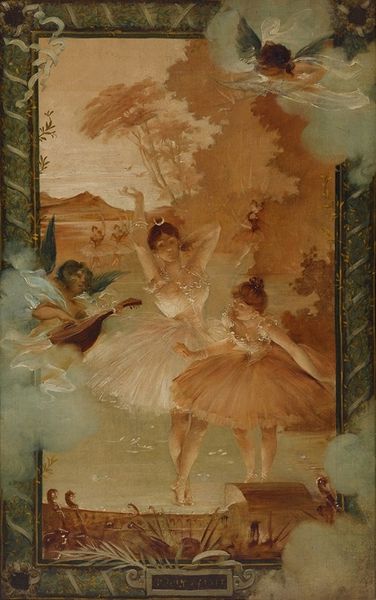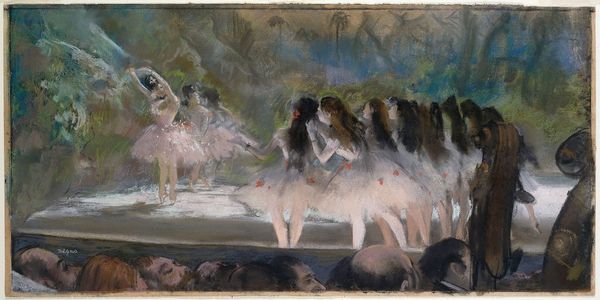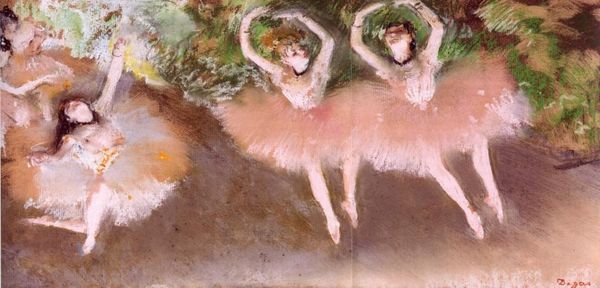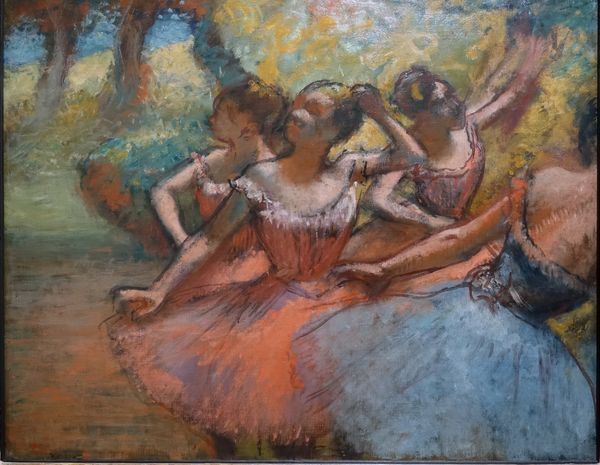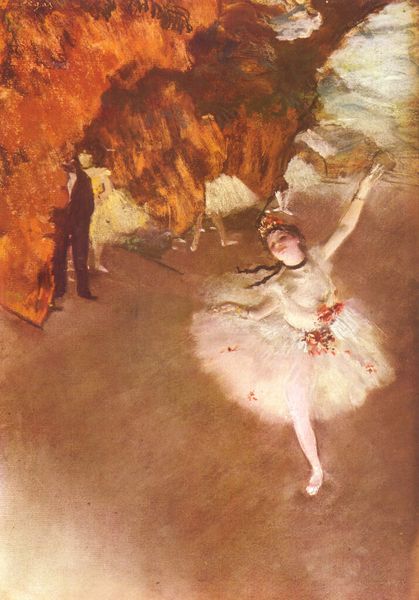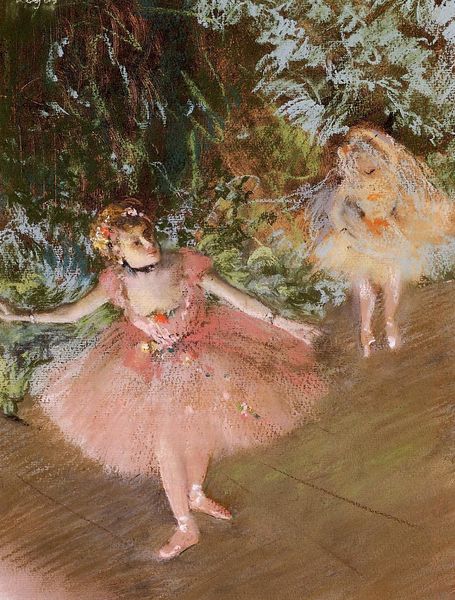
painting, oil-paint
#
impressionistic
#
painting
#
impressionism
#
oil-paint
#
figuration
#
group-portraits
#
genre-painting
#
modernism
Copyright: Public domain
Edgar Degas’ oil painting, ‘Three Ballet Dancers’ captures a moment of respite for dancers, a common theme in his late 19th century work. Degas was a member of the French upper-middle class, and though he is well-known as a founder of Impressionism, he actively distanced himself from its aesthetic innovations. As such, his paintings offer an important insight into the cultural values of the time. What does it mean to see young ballerinas depicted so frequently? Ballet was a popular form of entertainment, but it also stood as a symbol of class and gender ideals. We must remember that many of these dancers came from impoverished backgrounds, and being a ballet dancer was one of the few ways they could ascend the social hierarchy, but this came at the cost of being subjected to the male gaze. These dancers often became objects of male desire, both on and off stage, reinforcing the unequal power dynamics of the time. These elements can also be observed in the composition and perspective that Degas employs, thus sparking a debate around the themes of class, gender, and artistic representation.
Comments
No comments
Be the first to comment and join the conversation on the ultimate creative platform.
